Breast Cancer Treatment Options

Breast cancer is frequently treated with a range of therapies, and it may involve a mix of treatments. Treatment options are determined by various factors such as the type of cancer, its stage and grade, the size of the tumour, and the patient’s age, health, and preferences.
The various treatment options include surgery, radiation therapy, chemotherapy, targeted therapy, and hormone therapy. Most breast cancer patients undergo surgery to remove the tumour. After the surgery, depending on the type of breast cancer and how advanced it is, they may receive further treatment such as chemotherapy, hormonal treatment or radiation as well.
Surgery for breast cancer treatment
Surgery is the most common treatment for breast cancer. The type of surgery you have depends on the stage of your cancer, your age, your overall health, and your personal preferences. There are three main types of surgery for breast cancer:
Lumpectomy (breast-conserving surgery): Lumpectomy is the most common type of surgery for breast cancer. The surgeon removes the tumour and a small amount of surrounding normal tissue. Lumpectomy is also called breast-conserving surgery, partial mastectomy, or segmental mastectomy.
Mastectomy: Mastectomy is surgery to remove all of the breast tissue. A mastectomy can be conducted on one breast or both breasts. There are different types of mastectomies, including total mastectomy, modified radical mastectomy, skin-sparing mastectomy, and nipple-sparing mastectomy.
Breast reconstruction: Breast reconstruction is surgery to rebuild the shape of the breast after a mastectomy. Breast reconstruction can be done at the same time as the mastectomy (immediate reconstruction) or at a later date (delayed reconstruction).

Lumpectomy (breast-conserving surgery)
Lumpectomy is surgery to remove the cancerous tumour from the breast and a small margin of healthy breast tissue around it. A margin of surrounding tissue is removed to reduce the chance of any cancer cells remaining. It will be examined to check if there is a margin of cancer:
- Positive margins indicate that the cancer cells are very near or have reached the edges of the tissue taken. Then you might require additional surgery to remove additional tissue. Some patients may require a mastectomy to make sure all traces of cancer are removed.
- Negative (clear) margins indicate that no cancer cells were identified at the outer edge of the tissue removed. Then you won't need any further surgery to the breast.
A lumpectomy is usually recommended for patients suffering from early stage cancers, where tumours are smaller or limited to one area or one quadrant of the breast, and when patients are unlikely to suffer from a recurrence of breast cancer .
A lumpectomy is usually followed by radiation therapy (radiotherapy) on the remaining breast tissue to lower the chance of the breast cancer coming back. It is frequently combined with oncoplastic surgery, which combines breast cancer tumour excision with plastic surgical techniques. As a result, it’s less likely you’ll notice a dent or see a significant variation between the breasts.
Mastectomy
A mastectomy is a surgery to remove all of the breast tissue. There are different types of mastectomies, depending on how much breast tissue is removed. A mastectomy may be conducted on women who cannot be treated with a lumpectomy, for example when cancer is large and has spread to other parts of the breast. Women may also opt for a mastectomy if they are at a high risk of developing breast cancer or suffering a recurrence of breast cancer.
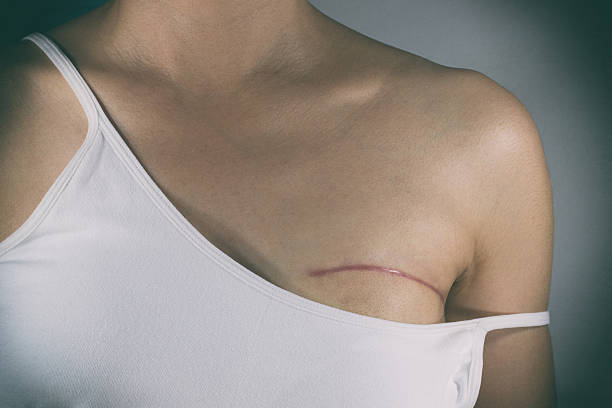
also called total mastectomy, is the most common type of mastectomy. It removes all of the breast tissue, including the skin of the breast, the nipple and the areola (the dark area around the nipple).
also called Halsted mastectomy, removes the entire breast, the skin, nipple, areola, and some underarm lymph nodes to check whether cancer has spread beyond the breast.
This is the most complex type of mastectomy, in which the surgeon removes the entire breast including the skin, nipple, and areola, lymph nodes underneath the arm and in the armpit, the tissue that covers most of the rib cage, and chest wall muscles underneath the breast.
The advantage of a radical mastectomy over other types of mastectomy is that it provides the best chance of removing all of the cancerous tissue. The disadvantage is that it can be more disfiguring than other types of mastectomy.
For several decades, radical mastectomy was the "gold standard" in breast cancer therapy. It is now quite uncommon thanks to improved imaging technology and additional treatment alternatives. It will only be recommended if the tumour spreads into the chest wall or the patient has had recurrent cancers.
Subcutaneous (nipple-sparing) mastectomy removes all of the breast tissue but leaves the nipple, skin and areola in place. This method is used only if the patient will have immediate breast reconstruction. Your surgeon will also take some tissue from under the nipple for test to ensure that there Is no tumour left behind.
Skin sparing mastectomy removes all of the breast tissue including the nipple and areola but leaves most of the healthy breast skin in place. This method is used only if the patient will have immediate breast reconstruction.
Prophylactic mastectomy is surgery to remove one or both breasts before cancer develops. This may be recommended if you have a high risk of developing breast cancer, such as a strong family history or the presence of the BRCA1 or BRCA2 gene mutation.
Unilateral vs bilateral mastectomy
Unilateral mastectomy is surgery to remove only one breast. This may be recommended if you have cancer in only one breast and want to keep your other breast.
A bilateral or double mastectomy is surgery to remove both breasts. This may be recommended if you have cancer in both breasts, have a high risk of developing breast cancer in the future or have a strong family history of breast cancer.
Some women opt to have both breasts removed even if they've only been diagnosed with cancer in one breast (contralateral prophylactic mastectomy). This is usually only recommended for women who are at high risk of developing cancer in the other breast, such as those with the BRCA1 or BRCA2 gene mutation or strong family history. Women who undergo bilateral mastectomies may consider breast reconstruction.
After a mastectomy, some women may still have to undergo radiation therapy if:
- The tumour was large (larger than 4cm
- Cancer has spread to the lymph nodes
- Clear margins are not found - cancer cells are found in the margins of the skin or muscle removed
As a mastectomy can cause a significant change in the appearance of the breast, some women may opt to undergo breast reconstructive surgery to improve the appearance of the breast. It is important that you discuss this with your doctor before undergoing a mastectomy.
Who should go for breast cancer screening?
All women over the age of 40 should have a mammogram every year. Women who are at high risk for breast cancer may need to have more frequent mammograms. If you have a family history of breast cancer or other risk factors, you may need to start breast cancer screenings earlier.
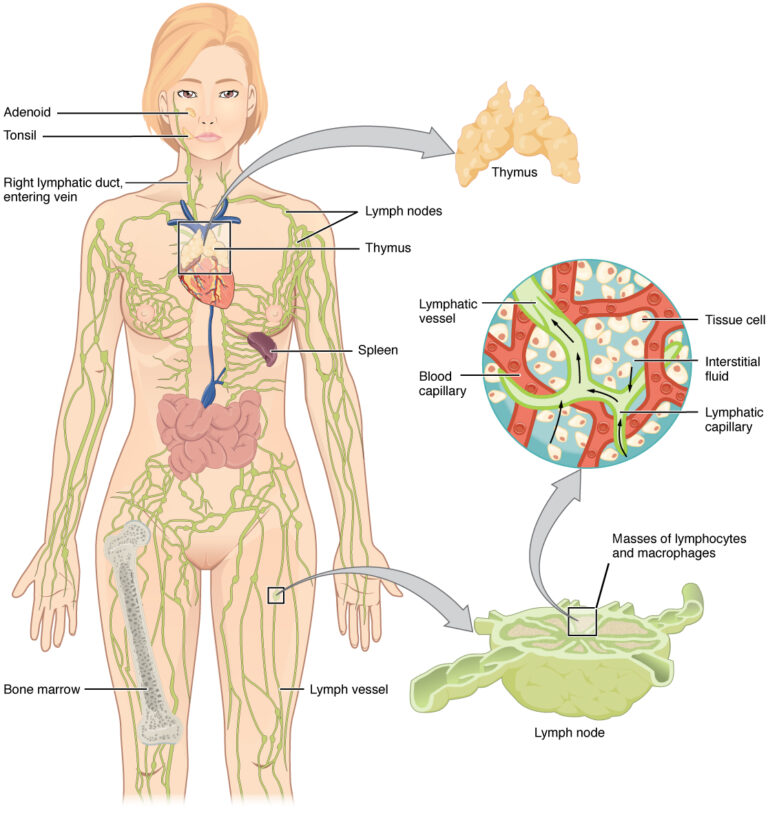
Lymph node removal surgery
Lymph nodes are small bean-shaped structures that are found throughout the body. They store white blood cells, which fight infection. Lymph nodes also filter lymph fluid as it flows through the body. Lymph fluid is a clear fluid that contains infection-fighting cells.
The surgeon will remove some lymph nodes during breast cancer surgery to see if the disease has spread. If cancer has spread to your lymph nodes, you may need more treatment after surgery, such as chemotherapy or radiation therapy.
- The sentinel node is the first lymph node to which cancer is likely to spread from the breast. A sentinel node biopsy is a procedure to remove the sentinel node (or nodes) and check it for cancer. The surgeon will make a small incision in the skin over the lymph node area and insert a thin tube called a sentinel node needle. The surgeon will then use a special dye and/or a radioactive tracer to help locate the sentinel nodes. Once the sentinel nodes are located, they're removed and checked for cancer. If the sentinel lymph node contains cancer, the surgeon may recommend an axillary lymph node dissection.
- Axillary lymph node dissection: An axillary lymph node dissection is a procedure to remove some or all of the lymph nodes in the armpit (axilla). This is usually done at the same time as a sentinel node biopsy. The surgeon will make an incision in the skin over the lymph node area and remove the lymph nodes. The removed lymph nodes are then checked for cancer.
Radiation therapy for breast cancer treatment
Radiation therapy, also called radiotherapy, is a common treatment for breast cancer that uses high-energy beams to target and destroy cancerous cells. It is usually recommended after breast-conserving surgery and frequently used in patients with high risks after a mastectomy to reduce the risk of cancer recurring.
Radiotherapy can be given externally (external beam radiation therapy) which means the radiation comes from a machine outside of your body to your breast, or internally (brachytherapy) in which case it comes from radioactive materials placed directly into or close to the tumour.
Types of radiation therapy
The 2 main types of radiation therapy for breast cancer are:
External beam radiation therapy (EBRT) is the most common type of radiation therapy for patients with breast cancer. It is given using a machine that directs the high-energy beams at either the whole breast or just a specific area of the breast affected by cancer (partial breast radiation).
Whole breast radiation is usually conducted daily in sessions that last 30-60 minutes from Monday to Friday for about 6 week Another therapy schedule plan is hypofractionated radiation therap n which the radiation is delivered in larger daily doses (Monday through Friday) using fewer treatments (typically for only 3 to 4 weeks). This therapy schedule has been found to be just as effective for women who have had breast-conserving surgery and whose cancer has not spread to underarm lymph nodes. It may also minimize the number of short-term side effects.
Types of external beam radiation therapy:
- 3-D conformal radiation therapy uses 3D imaging to map the contours of the tumour before treatment. Once the tumour is precisely located, the radiation beams can be shaped to match its contours and better target the cancer cells while sparing the surrounding healthy tissue.
- Intensity-modulated radiation therapy (IMRT) uses a computer-controlled machine to deliver radiation beams of varying intensities. This allows higher doses to reach specific parts of the tumour and reduces damage to surrounding healthy tissue.
- Image-guided radiation therapy (IGRT) involves using imaging technology, such as CT, MRI or PET scans, during treatment in order to precisely target the radiation beams on the tumour while minimizing exposure to normal tissues.
Internal radiation therapy, also called brachytherapy, is a type of radiation therapy that uses radioactive implants (seeds) to deliver radiation directly to the breast or the area where the cancer is. It is a form of accelerated partial breast irradiation (APBI) The radioactivity from the implants destroys cancer cells while sparing healthy tissue from exposure to high-energy beams. This type of treatment can be given as high-dose radiation or low-dose radiation.
Women who have had a lumpectomy may undergo brachytherapy instead of whole breast radiation. This form of radiation therapy is usually recommended for patients suffering from early-stage cancers.
During the procedure, radioactive implants are inserted via catheters into the affected area of the breast, usually around the area from which the tumour was removed.
Different kinds of brachytherapy are used on breast cancer patients. Low Dose rate (LDR) brachytherapy uses a radioactive implant that emits a low dose of radiation and keeps the implant in place over a period of time (usually several hours or a few days). On the other hand, High Dose rate (HDR) brachytherapy uses a high dose of radiation and entails placing the implant for only a brief period of time (usually 1 to 2 minutes) before removing them.


Hormone therapy for breast cancer treatment
Hormone therapy is a type of systemic therapy that slows or stops the growth of breast cancer cells by lowering the levels of hormones in the body. It is used to treat breast cancers that are hormone oestrogen-receptor or progesterone-receptor positive.
It’s often used following surgery (as adjuvant treatment) to reduce the risk of cancer recurrence. In certain situations, it can be used before surgery to decrease the size of the tumour, making it more likely that the disease will be removed completely.
Types of hormone therapies
A number of hormone therapies are available to treat breast cancer. One approach is to prevent the hormones from attaching to the receptors on the cancer cells. The tumour might slow and the cancer cells may die when the hormones are unable to attach to them.
Medications that cause this action to take place include:
- Tamoxifen is a type of SERM (selective oestrogen receptor modulator) that works by blocking the effects of oestrogen on breast cancer cells. It's typically given as a pill and may be used alone or with other treatments, such as chemotherapy. It's typically used to reduce the chance of breast cancer recurrence in women who have had early-stage breast cancer treatment.
- Fulvestrant is a type of oestrogen receptor antagonist that works by binding to the oestrogen receptor and preventing it from being activated by oestrogen. It is given as an injection once a month, and may be used alone or with other treatments, such as tamoxifen, an aromatase inhibitor, or chemotherapy. It is used to combat advanced breast cancer in postmenopausal women.
- Toremifene is also another type of SERM that works by binding to the oestrogen receptor and preventing it from being activated by oestrogen. It is given as a pill and is used to treat breast cancer that has spread beyond the breasts. It is approved for use in postmenopausal women.
Aromatase inhibitors (AIs) are another type of hormone therapy that works by reducing the amount of oestrogen in your body. It works by blocking the enzyme aromatase, which converts androgen into oestrogen. AIs are only given to women with hormone-receptor positive breast cancer.
The AIs used to treat breast cancer include:
Arimidex, Aromasin, and Femara
They are typically given as pills and may be used alone or with other treatments. The length of time you take aromatase inhibitors depends on your specific condition. According to the current studies, continuing these tablets for up to 10 years is the normal approach, but each person is different, and you and your doctor should discuss how long you need to continue taking them.
Chemotherapy for breast cancer treatment
Chemotherapy is a type of systemic therapy that uses medications to kill cancer cells. These anti-cancer drugs can be given through a vein in your arm (intravenously) or taken orally by mouth as a pill. The drugs travel through the bloodstream to reach cancer cells in most parts of the body. Not every patient with breast cancer will require chemotherapy.
Chemotherapy can be used alone, as adjuvant therapy, given after surgery to eliminate any remaining cancer cells and reduce the risk of recurrence. It is also sometimes used as neoadjuvant therapy to decrease the size of a tumour before surgery, making it more likely that the disease will be removed completely. Chemotherapy may also be given to treat metastatic breast cancer. It can be used as the main therapy for women whose cancer has spread outside the breast and underarm area to distant organs like the liver or lungs.
Chemotherapy is usually given over 3-6 months in cycles, with each treatment followed by a period of rest to allow your body to recover. The number of cycles and length of treatment will depend on the type and stage of breast cancer you have, how well the treatment is working, and how well your body tolerates it.
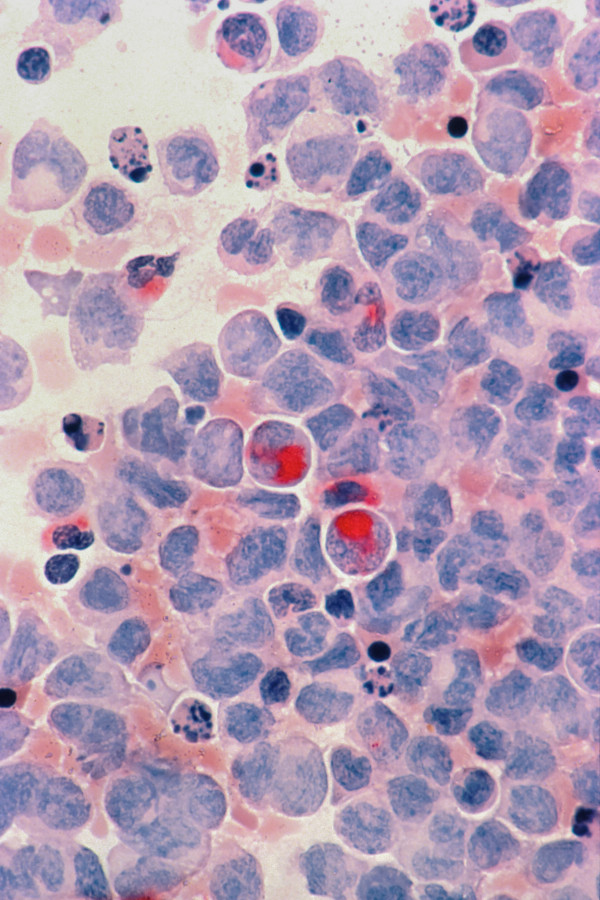
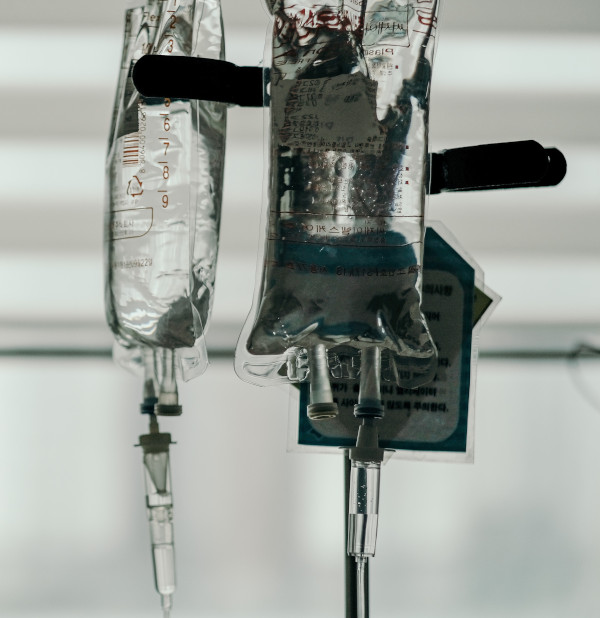
Targeted drug therapy for breast cancer treatment
Targeted drug therapies are treatments that target specific molecules, such as Human Epidermal Growth Factor 2 (HER2) receptors which are overexpressed in about 25% of breast cancers. Targeted drugs work to destroy cancer cells or slow down their growth. They work differently from traditional chemotherapy drugs, which kill all fast-growing cells, including healthy ones.
Targeted therapies are sometimes used in combination with other treatments, such as hormone therapy, chemotherapy, or immunotherapy. They can be given intravenously, as an injection under the skin, or as a pill. Examples of medications that target HER2 receptors include Trastuzumab, which targets these receptors to slow the growth and spread of cancer cells .
Immunotherapy for breast cancer treatment
Immunotherapy is a type of cancer treatment that uses the body’s immune system to fight cancer. The immune system is a complex network of organs, cells, and proteins that work together to protect the body from infection and disease.
There are different types of immunotherapy:
- Monoclonal antibodies can be used to target and destroy cancer cells without harming healthy cells. Monoclonal antibodies are man-made proteins that mimic the antibodies found in your body. They attach to cancer cells, allowing for the immune system to more easily identify and destroy cancer cells
- Checkpoint inhibitors are drugs that block the proteins that keep the immune system from attacking cancer cells. By releasing these brakes, checkpoint inhibitors help the immune system fight cancer.
Clinical trials are ongoing to test new immunotherapy drugs and combinations of immunotherapy with other types of cancer treatment. Some immunotherapy drugs can have serious side effects, so it’s important to talk with your doctor about the risks and benefits before starting treatment.
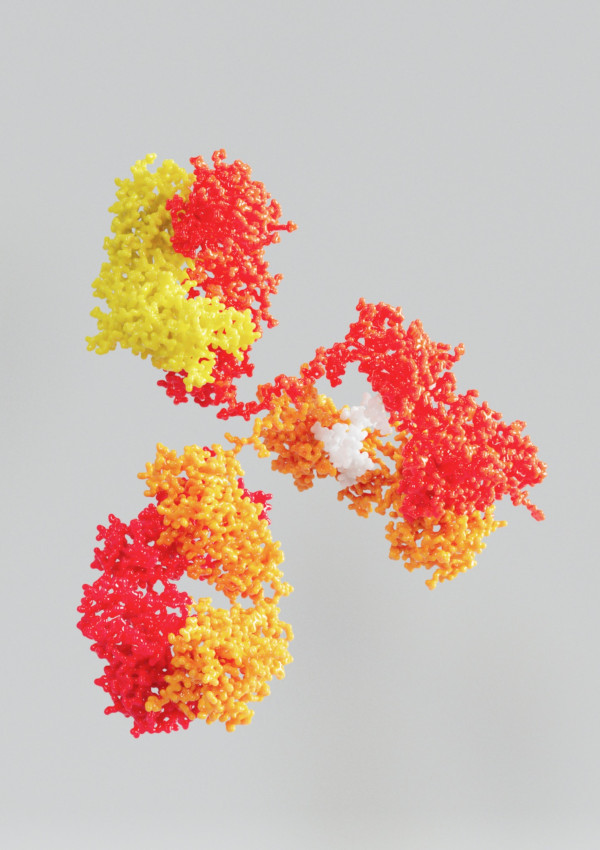
Side effects of breast cancer chemotherapy treatment
The side effects of chemotherapy for breast cancer treatment vary depending on the type and stage of cancer, and the type of treatment. Some common side effects include:
- Fatigue
- Nausea and vomiting
- Constipation
- Hair loss
- Loss of appetite
- Mouth sores
- Difficulty swallowing
- Dry mouth
- Muscle aches
- Joint pain
- Neuropathy (tingling, numbness, or burning sensations in hands and feet)
- Peripheral neuropathy (decreased ability to feel pain or changes in temperature)
- Skin changes (rash, dryness, redness, or peeling)
- Urinary changes (frequency or urgency)
- Weight gain or loss
Before embarking on any treatment plan, discuss the potential side effects with your doctor. It is also advisable to discuss how to manage these side effects with your doctor, and alert them if any severe or persistent side effects arise.
Conclusion
Breast cancer treatment has come a long way in recent years, and there are now more options than ever before. The best course of treatment depends on the type and stage of breast cancer you have, as well as your personal preferences.
Clinical trials are ongoing to test new treatments for breast cancer. If you have been diagnosed with breast cancer, talk to your doctor about all of your treatment options.
